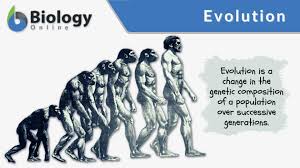Understanding Evolution The Pathway of Life’s Transformation

Evolution is one of the most profound concepts in science, yet it can often be misunderstood or oversimplified. From the very beginning of life on Earth to the complex organisms we see today, evolution explains how life has changed and adapted over billions of years. This process has shaped the diversity of species, influenced ecosystems, and even affected our own species’ development. In this article, we will explore the fundamental principles of evolution, trace its history, and highlight how it continues to impact life on Earth.
What is Evolution?
At its core, evolution refers to the gradual change and adaptation of living organisms over generations. These changes occur in response to environmental pressures, genetic mutations, and natural selection. The theory of evolution, first popularized by Charles Darwin in the 19th century, provides the framework for understanding how species evolve and adapt to their environments.
While many people associate evolution with the idea of “survival of the fittest,” the concept is more nuanced. Evolution is driven by genetic variation, which results from mutations, genetic recombination during reproduction, and other factors that introduce diversity within a population. Over time, these variations may become more prevalent if they provide an advantage for survival and reproduction in a given environment.
The Origins of Evolutionary Theory
The idea of evolution can be traced back to ancient civilizations, but it wasn’t until the 19th century that it gained scientific credibility. Before Darwin, many thinkers, such as Jean-Baptiste Lamarck, proposed early theories of evolution. Lamarck’s ideas, which included the inheritance of acquired characteristics, were influential but flawed.
Darwin’s groundbreaking work, however, fundamentally changed how we understand life’s history. In 1859, Darwin published On the Origin of Species, where he proposed the theory of natural selection as the mechanism of evolution. According to this theory, individuals with traits that make them better suited to their environment are more likely to survive and reproduce, passing those beneficial traits onto their offspring.
Darwin’s theory was revolutionary because it provided a mechanism for evolution—natural selection—that was observable and testable. This transformed the way scientists viewed the development of life on Earth.
Key Concepts in Evolution
1. Natural Selection
Natural selection is the process by which certain traits become more common in a population because they provide a survival or reproductive advantage. For example, in a population of giraffes, those with longer necks may be better able to reach food in tall trees, allowing them to survive and reproduce more successfully than shorter-necked individuals.
Over time, natural selection can lead to the emergence of new species as populations adapt to different environments or ecological niches. This is one of the main drivers behind the diversity of life we see today.
2. Genetic Drift
Genetic drift is another mechanism of evolution, though it differs from natural selection. While natural selection is driven by environmental pressures, genetic drift occurs due to random events that alter the frequency of certain traits in a population. For example, if a natural disaster wipes out a large portion of a population, the remaining individuals may have a different genetic makeup than the original population, simply due to chance.
Genetic drift can have a significant impact on small populations, where the effects of random events are amplified.
3. Mutation
Mutations are changes in an organism’s DNA that can lead to new genetic traits. These mutations can be beneficial, neutral, or harmful, and they serve as the raw material for evolution. If a mutation provides an advantage, it may be passed on to future generations through natural selection. On the other hand, harmful mutations may be eliminated over time as individuals with those traits are less likely to survive and reproduce.
Mutations are a natural part of the evolutionary process and contribute to the genetic diversity of a population.
4. Gene Flow
Gene flow refers to the transfer of genetic material between populations of the same species. This can happen when individuals from different populations interbreed, introducing new genetic variations into the gene pool. Gene flow can help maintain genetic diversity within populations and reduce the likelihood of speciation, or the formation of new species.
Evidence for Evolution
One of the most compelling aspects of the theory of evolution is the vast amount of evidence that supports it. From fossil records to genetic data, scientists have found multiple lines of evidence that demonstrate the reality of evolution.
1. Fossil Record
Fossils provide a snapshot of life from millions of years ago, allowing scientists to track how species have changed over time. By studying fossilized bones, shells, and other remains, paleontologists have identified patterns of change in many species, revealing how life forms evolved over geological time scales.
For example, the fossil record shows how early fish-like creatures gradually evolved into amphibians, reptiles, birds, and mammals over millions of years. These transitional fossils provide clear evidence of evolutionary change.
2. Comparative Anatomy
Comparative anatomy is the study of similarities and differences in the body structures of different species. By examining these anatomical features, scientists can infer common ancestry and evolutionary relationships. For example, the limbs of humans, whales, bats, and dogs all share a similar bone structure, suggesting that these species share a common ancestor.
3. Genetic Evidence
Modern genetics has provided a powerful tool for understanding evolution. By comparing the DNA of different species, scientists can trace evolutionary relationships and identify common genes. For example, humans and chimpanzees share about 98% of their DNA, indicating a close evolutionary relationship.
The Role of Evolution in Modern Biology
Evolutionary principles have far-reaching implications in fields such as medicine, agriculture, and conservation biology. Understanding evolution is essential for addressing challenges like antibiotic resistance, the development of new crops, and the conservation of endangered species.
1. Antibiotic Resistance
One of the most pressing issues in modern medicine is the evolution of antibiotic-resistant bacteria. When bacteria are exposed to antibiotics, some may carry genetic mutations that allow them to survive. These resistant bacteria can then reproduce, passing on their resistance to future generations. This process of natural selection has made it more difficult to treat bacterial infections, highlighting the importance of understanding evolutionary processes in combating infectious diseases.
2. Agriculture
In agriculture, evolutionary principles are applied to improve crop yields, resist pests, and increase food security. For example, the development of genetically modified organisms (GMOs) relies on understanding how traits are inherited and how they can be selectively bred for beneficial characteristics.
3. Conservation
Conservation biology also relies heavily on evolutionary theory. Understanding the genetic diversity within populations and how species adapt to changing environments helps conservationists protect endangered species and restore damaged ecosystems.
Conclusion: The Continuing Impact of Evolution
Evolution is not just a theory; it is the scientific framework that explains the diversity of life on Earth. From the development of species to the spread of genetic mutations, evolution is an ongoing process that continues to shape the world around us. By studying evolution, we gain insight into how life adapts, survives, and thrives in an ever-changing environment.
Whether in the context of medicine, agriculture, or conservation, the principles of evolution provide valuable tools for addressing the challenges of the modern world. By continuing to explore and understand evolution, we can better appreciate the intricate web of life and the processes that have shaped it for billions of years.
This exploration of evolution offers a broad understanding of how life on Earth has evolved and continues to do so. The evidence is clear, and the impact of evolutionary science is profound, shaping our understanding of biology and the natural world.



